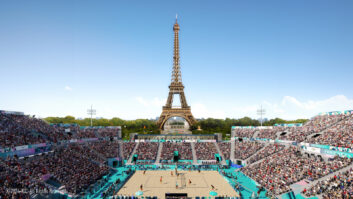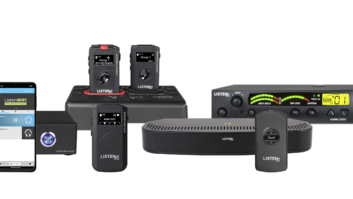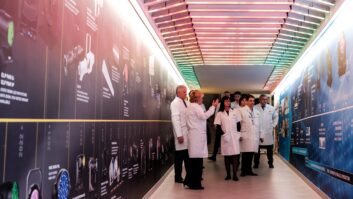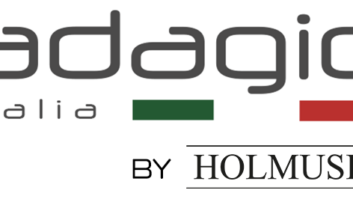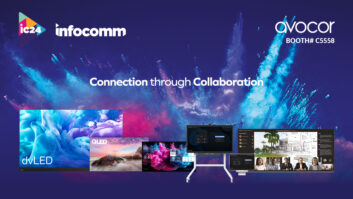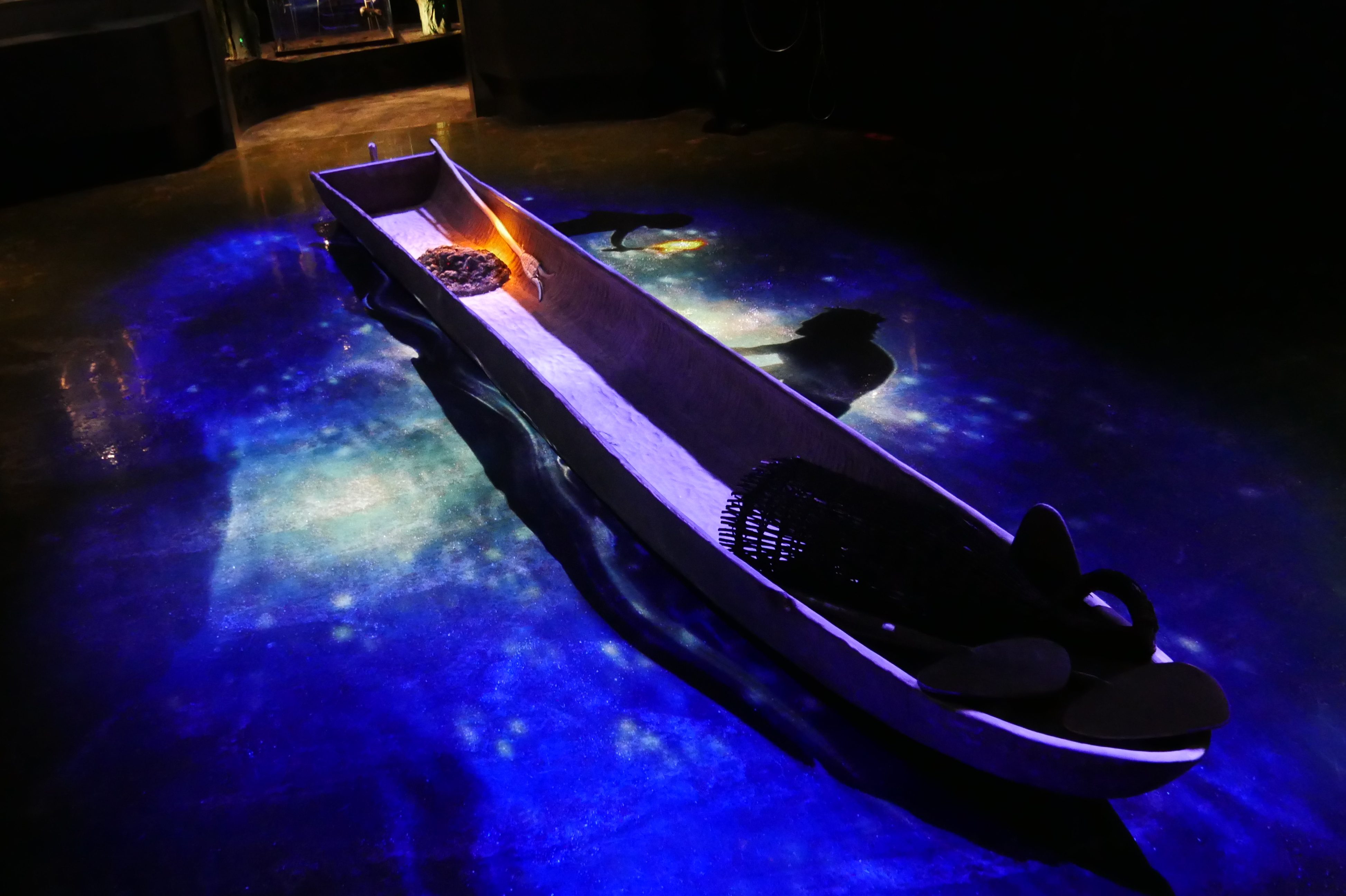
This reimagined Danish museum has added a new Stone Age exhibition, which brings the total number of Panasonic products featured within in it to over 100. Duncan Proctor paid a visit to see how this extensive kit list is helping tell stories and recreate scenes from early human history.
The Moesgaard Museum on the outskirts of Aarhus was opened in its current form in October 2014 as an exhibition building and meeting space featuring dedicated exhibits presenting different stages of human history.
The 15,500sqm structure was designed by Henning Larsen Architects and contains archaeological and ethnographic exhibits, meeting and conference rooms, as well as a café and shop for visitors. In addition, the unique architecture of the building is topped off with a grassy roof, from which visitors can view the sea, forest, and the landscape that surrounds Moesgaard Manor.
Built at a cost of 393 million Danish kroner (around £45m), the museum attracted over 50,000 people in its first month alone, more than the previous museum attracted in a full year. Its status as a specialised museum also allows its archaeologists to carry out research at home and abroad.
The internal team at Moesgaard Museum, led by Pauline Asingh, curator and head of new exhibitions, and Johan Ahrenfeldt, exhibition technology manager, took an innovative approach through a technology partnership with Panasonic. They wanted to go beyond the traditional format employed by a large number of museums, often displaying objects in isolation. Instead the team chose to present an animated picture, and tell a story incorporating the people who handled these objects on a day-to-day basis.
“The ambition behind the new building and the new exhibitions is to tell stories for man about man, and to create cultural-historical exhibitions which are experienced through the use of the senses, rather than understood by the mind,” said Pauline Asingh.
The team was responsible for the entire creative direction for the project along with an engineering team from Panasonic, who offered advice on the feasibility of what had been specified. The exhibition covers different stages of human history in Denmark, each period has its own dedicated exhibits starting with the Stone Age, through the Bronze, Iron, and Viking Ages, concluding with a look at more modern societies and their cultures.
This approach sees traditional exhibits combined with projected images and animations to create ‘scenographic environments’ that re-enact typical scenes from the period and immerse the visitor.
Stone Age
The latest addition to the museum is the Stone Age exhibition, which leads on to the Bronze, Iron, and Viking Age sections. This new exhibition includes 17 Panasonic projectors and two displays, taking the number of Panasonic AV products to over 100 (67 projectors and 34 displays), making it the biggest such installation in Europe.
The Stone Age exhibition includes a number of individual, immersive exhibits, starting with a boat scene that featured four Panasonic PT-RZ570 ceiling mounted laser projectors. The scene recreates fishermen paddling through the water, with their shadows reflected in the water through projected animations augmented by sound affects and artefacts. One additional PT-RZ670 projector with an ultra short throw lens provides the accompanying wall animation of fisherman in the distance offering a sense of the scale.
The next Stone Age exhibit was the ‘climate changes’ display, which included another three Panasonic laser projectors, also ceiling mounted and concealed from view. The projections are onto an uneven surface and depict the shifting landscape as temperatures change following the Ice Age with the ice receding to reveal grasslands, rivers, and mountains. The first human settlements are also depicted on a vertical projection screen at the far end of the display case, signalling the onset of the Stone Age in Denmark, again placing people at the centre of the narrative. The high contrast capability of the Panasonic projectors makes it possible to display the animations on to unconventional surfaces and show the passing of time and shifting landscape.
Another highlight from the Stone Age portion of the exhibition was the Neolithic clay pot exhibit, which tells the story of how people in the Stone Age believed in the cycle of life, specifically how sacrificing items and bones would bring them back later. The installation consists of two PT-VZ570 lamp projectors and a PT-RZ470 laser projector (all ceiling mounted) mapping video on the inside of the pot. Visitors can see the story unfold by looking through viewing holes in different parts of the pot, and audio is synced in speakers for Danish and in headphones for English.
The final exhibit from the Stone Age period is the ‘life size archaeologist’, which has a scientist from the museum presenting findings at a Stone Age settlement surrounded by artefacts, aiming to place the objects and the audience in the ‘right’ place, making the content more interesting and relevant. The installation is made possible by edge blending two PT-RZ670 laser projectors with DLE030 UST lenses, wall mounted to show the landscape and the archaeologist, alongside one PT-RZ470, ceiling mounted, recreating mythological drawings in the fireplace.
Realising the brief
“We wanted to integrate the AV design in to the overall creative process, and to design ambitious exhibitions,” said Johan Ahrenfeldt, exhibition technology manager. “This is when you appreciate and rely on the type of partnership we have with Panasonic, to make sure that the final result is worthy of the level of investment.”
The solutions central to the success of the project are principally the Panasonic laser projectors, many of which were ceiling mounted, the others utilised ultra-short throw lenses. The use of UST lenses allowed the projection distance to be shortened by approximately 60% compared to regular short throw lenses. The high contrast of the laser light source also made it possible for the team to design animations projected on to shapes and surfaces that would traditionally be off limits. The choice of projectors also helped reduce running costs and maintenance frequency.
Added to this, a variety of Panasonic displays (up to 80in) have been used across the museum for wayfinding and digital signage, as well as in support of exhibits displaying and describing in detail individual scenes as well as the wider context. Moesgaard has also used a touchscreen overlay to increase interactivity on a number of exhibits, often combining the touchscreen with dynamic HD video content.
The rest of the tour led visitors through the Bronze, Iron and Viking Ages with notable highlights including an Iron Age battle scene in the ‘War Room’. This exhibit features five PT-DZ680 projectors with short throw lenses and utilising reverse projection and in built edge blending software to recreate two animated armies on opposite curved walls. The opposing armies face each other with a walkway for visitors in between. It was made more immersive with sound affects, beginning with a horn indicating the start of the battle, followed by the sounds of swords hitting shields and arrows flying across the battlefield. The depiction of the infantry, archers and cavalry puts the visitor right in the midst of the battle with arrows raining down and onrushing soldiers enveloping the scene.
“The new building fulfils the vision that we have been working towards for many years; to have a museum where we are able to create those exact exhibitions which we feel will give three generations a shared museum experience,” says Jan Skamby Madsen, managing director of Moesgaard Museum.
